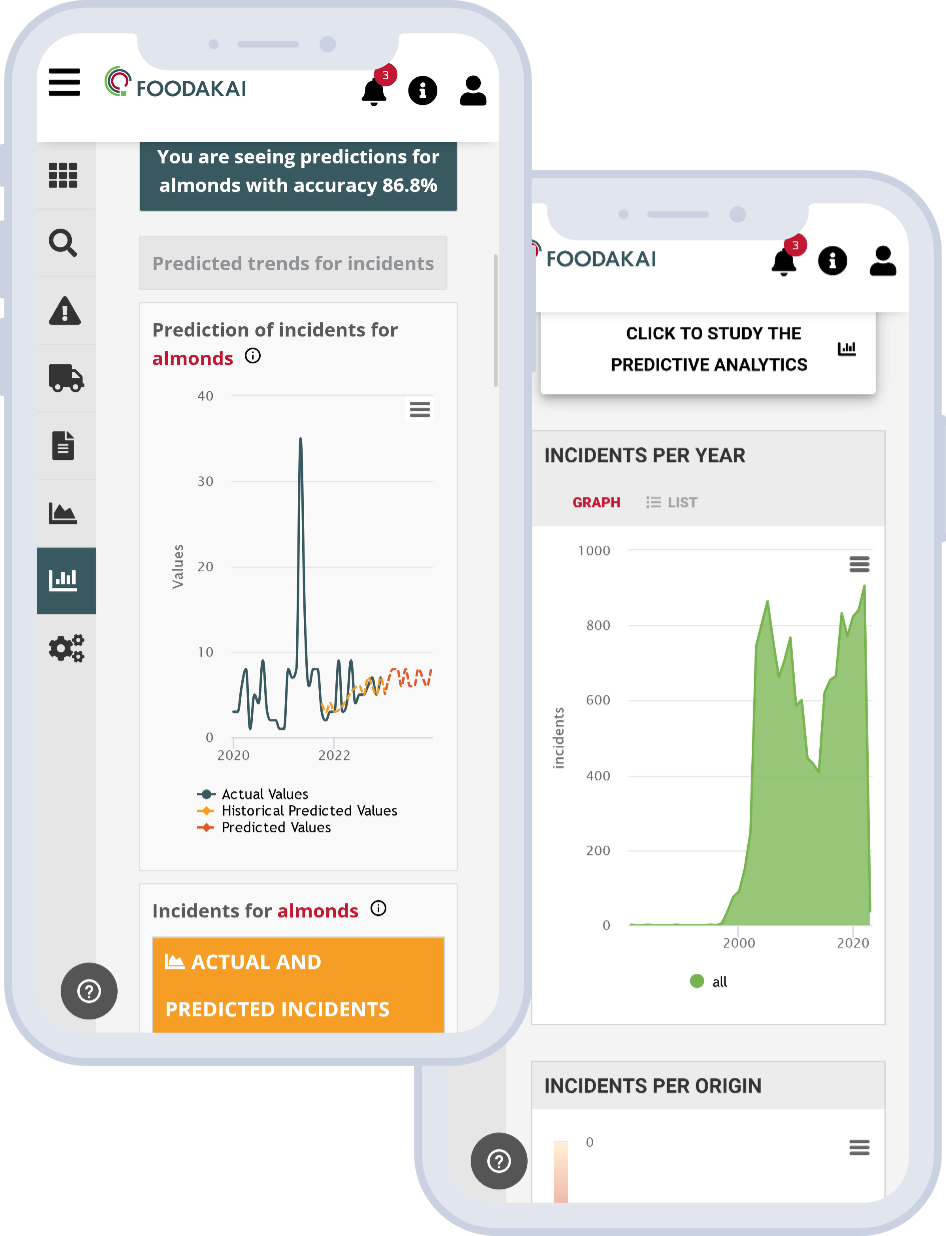
Listeria monocytogenes in cheese: the decade-long outbreak
Over the last couple of days, the food industry has found itself in the midst of a series of recalls involving cheese and cheese products, potentially contaminated with Listeria monocytogenes. More than 55 products sold under various brand names, have been pulled from the shelves of major retailers, across the United States. These recalls were prompted because of a routine state authority sampling program, that detected the presence of Listeria monocytogenes in the finished product.
DNA genome sequence analysis has, since then, established a connection between these recalls and a decade- long Listeria monocytogenes outbreak that the FDA and CDC are currently investigating, responsible for the illness of at least 26 individuals and the death of 2 in the United States. Via this DNA analysis, the source of this prolonged outbreak has been determined to be the cheese of a specific California based cheese and dairy manufacturing company that produced both own brand products but also supplied with cheese numerous brands.
Cheese products have been associated at various times with outbreaks of listeriosis through the years. In fact, Listeria monocytogenes has been the most common microbial cause of cheese-related recalls in both the United States and Canada in recent years.
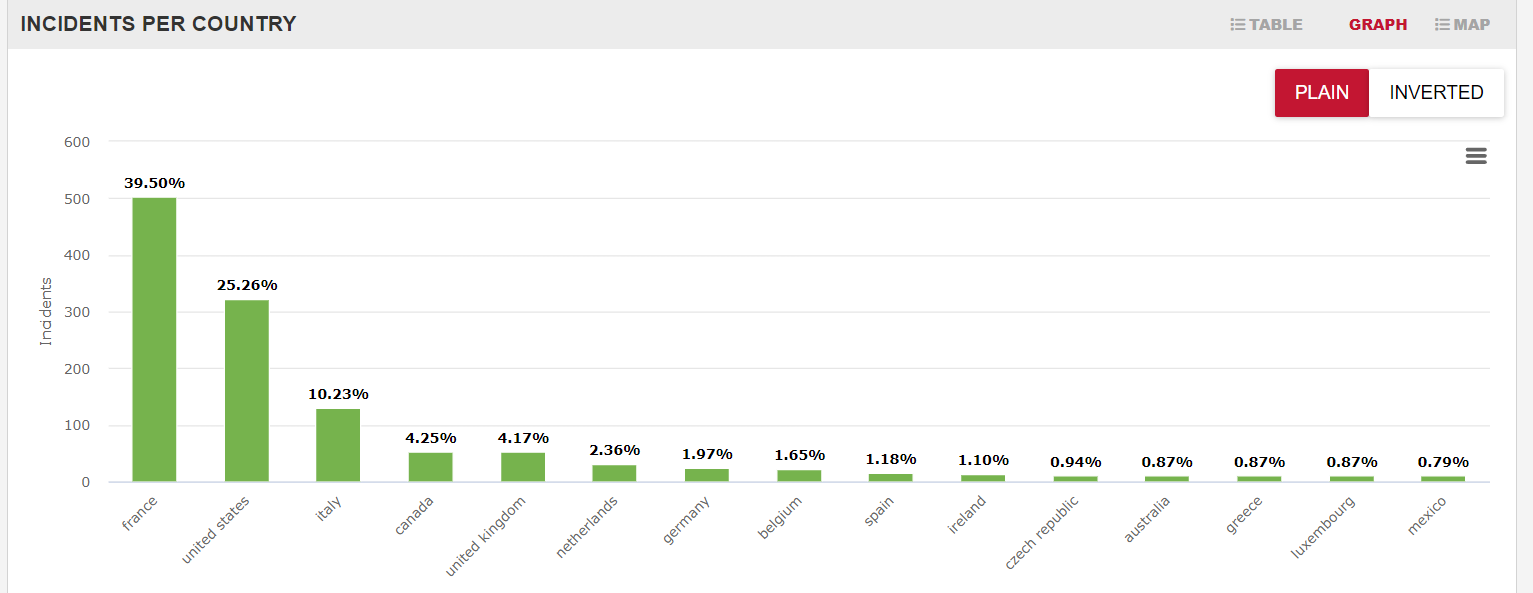
From the data captured in FOODAKAI, it is evident that over the last three years, most incidents involving Listeria in cheese were reported in France, with the United States ranking second.
An alarming trend is unveiled. When examining the distribution diagram for Listeria monocytogenes incidents linked to cheese, per month for the last three years, a concerning upward trend in cases from November 2023 is evident.
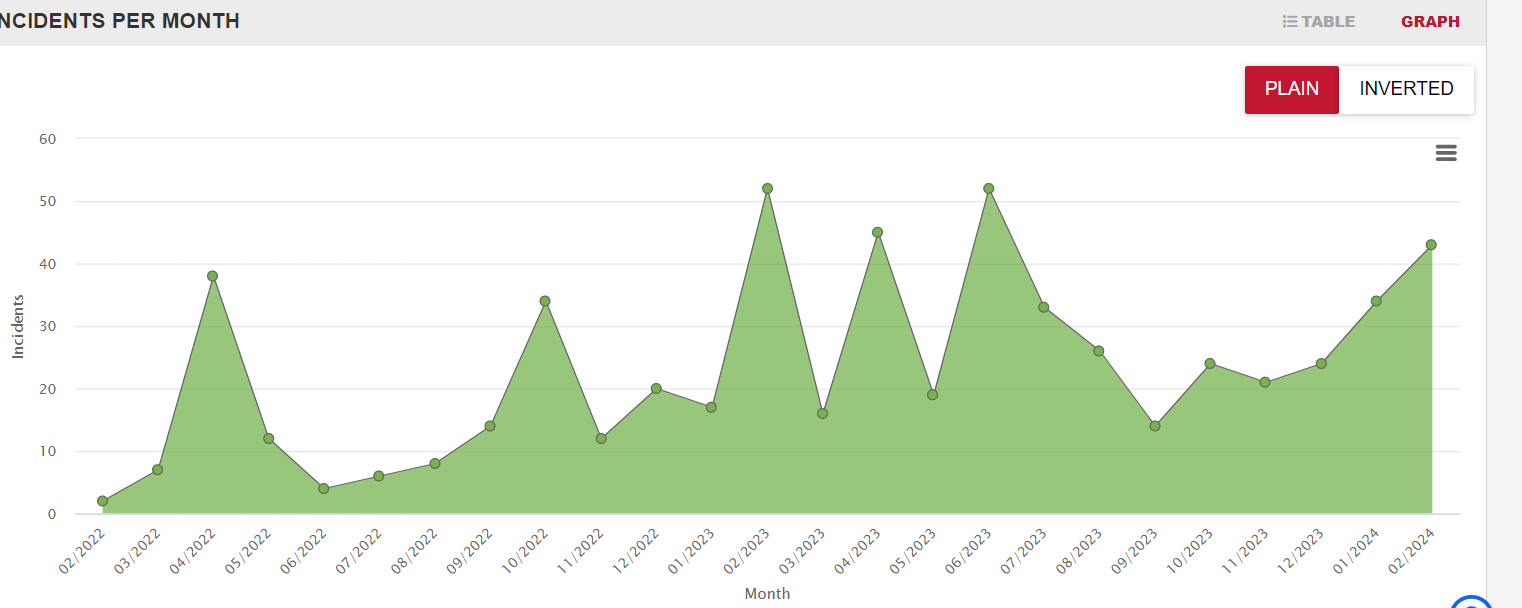
The risk assessment for Listeria monocytogenes presence on cheese products further highlights a high-risk indication for pathogenic bacteria and a 27% increase in tendency.

When examining the historical predictions for cheese incidents in the United States, it is noticeable from the diagram below that from early in 2023, the actual number of incidents surpassed the predicted values, sounding an early warning.
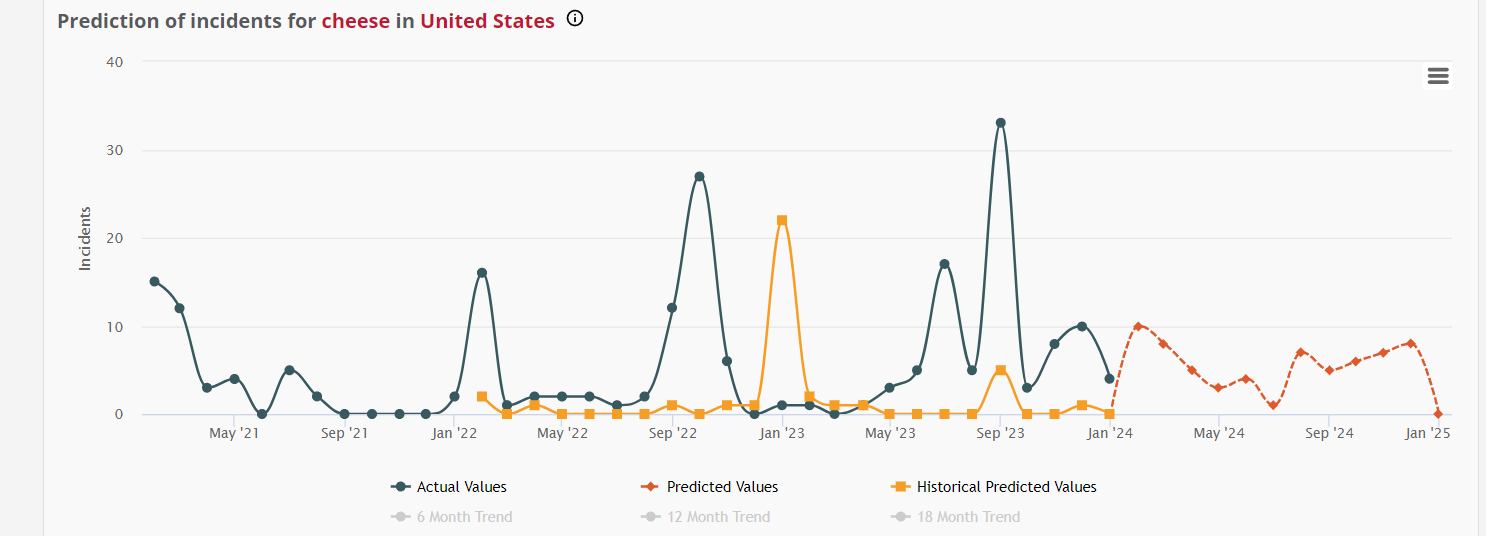
More specifically, FOODAKAI had forecasted a peak in the number of incidents in November 2023 for cheese, accentuated the above signs.
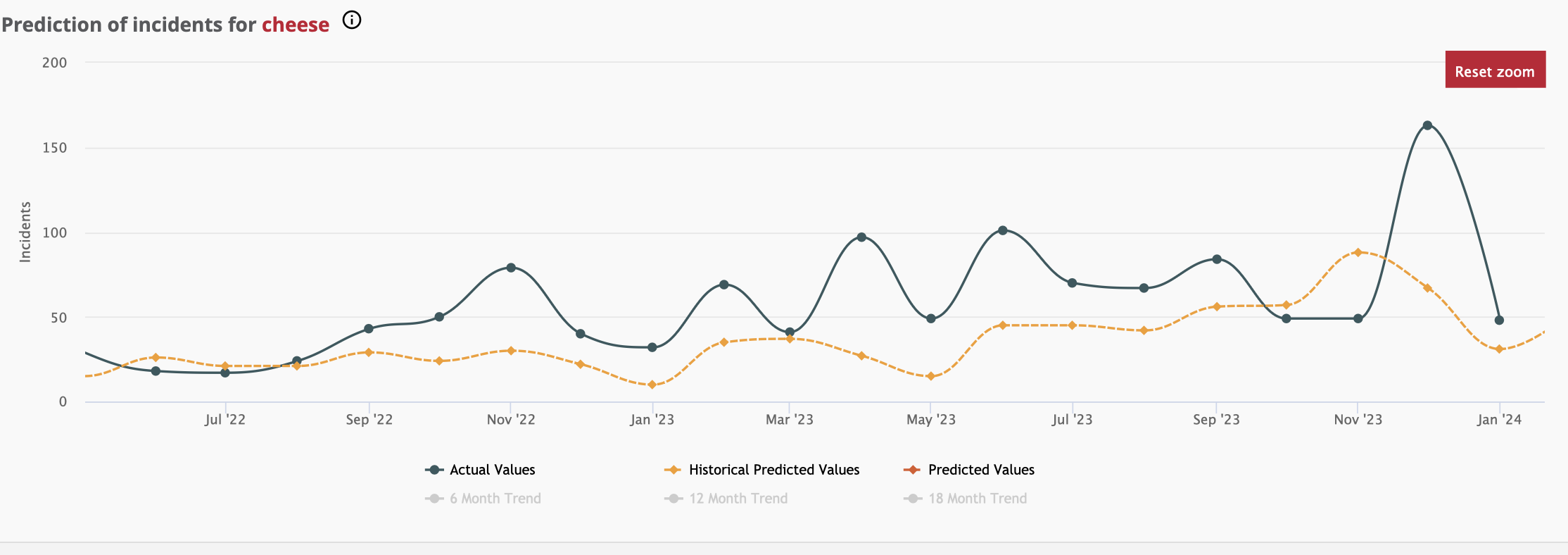
Overall, although FOODAKAI didn’t offer a crystal ball insight for the recent recalls, its predictive capabilities could have offered valuable early warnings to food safety professionals.
Once again, the focus shifts on prevention and the importance of proactive measures. It seems that a more comprehensive testing protocol specifically for RTE products such as cheese is key. Routine inspections to check compliance of staff adhering to cleaning and sanitizing SOPs should also increase but also a thorough review on how the industry personnel is educated on pathogen risks would be extremely important.
What does the forecast incident trend for Listeria monocytogenes look like? Looking ahead, as can be seen below through FOODAKAI, a significant rise in Listeria monocytogenes incidents for cheese products is highlighted, with a risk evolution forecast projecting a 16.71% increase over the next 11 months.
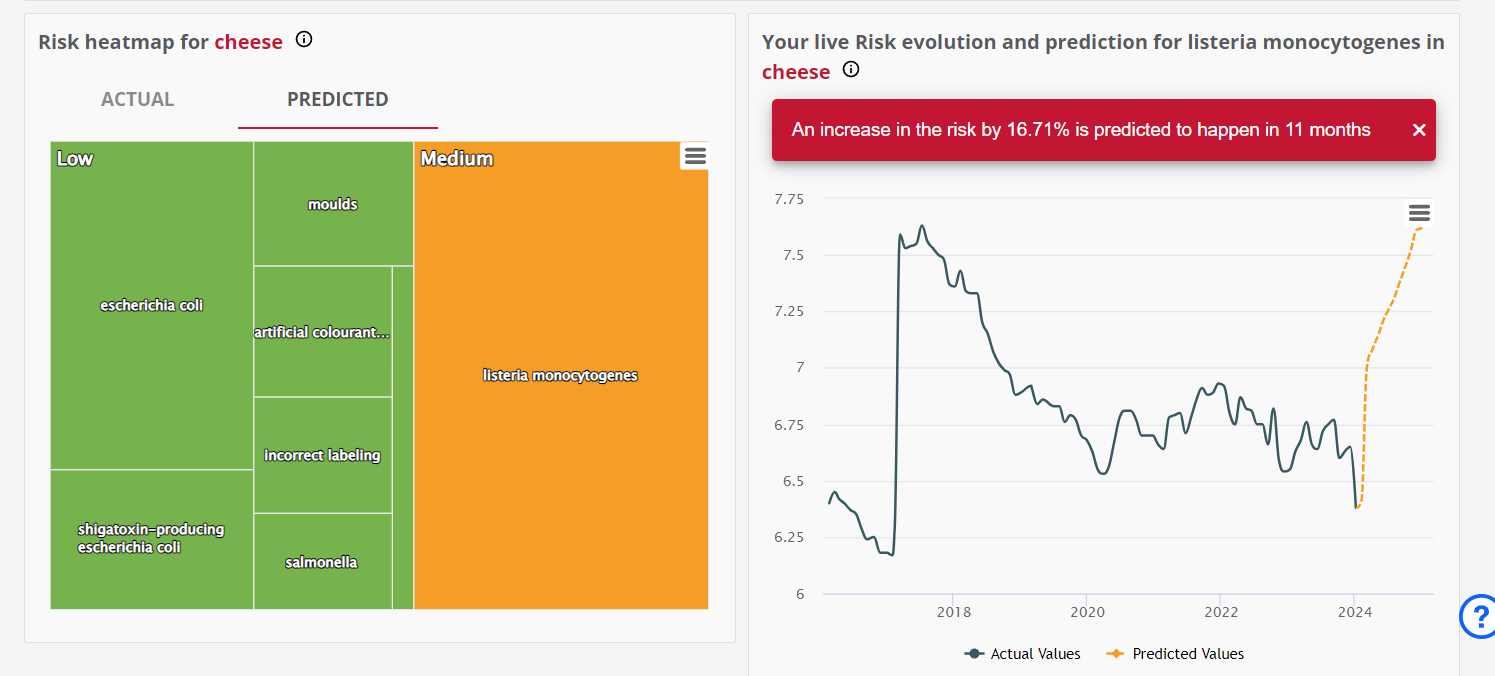
When reviewing the hazards that are most likely to increase for cheese and cheese products, a 33% trend increase for Listeria monocytogenes is identified.

Health issues caused by Listeria monocytogenes
Listeria monocytogenes causes an illness named listeriosis, that mostly affects pregnant women and immunocompromised individuals. Other people infected with Listeria rarely become seriously ill. From a microbiological point of view, intriguing facts concern Listeria monocytogenes. It exhibits resilience and growth across a broad temperature spectrum ranging from 0-42 ◦C, and this temperature adaptability is important in cases like this, as cheese is often considered a RTE product and does not undergo additional cooking from consumers.
Another important characteristic of Listeria is its ability to form biofilms (think of it as a bacterial cell matrix) on surfaces of food processing plants. Biofilms are particularly resistance to cleaning chemicals such as detergents and sanitizers and are often found to persist for several years causing recurrent cross contamination. The ongoing developments most definitely prompt discussions on the potential involvement of a resident strain in the manufacturing facility.
In conclusion, the current Listeria monocytogenes in cheese crisis should serve as a driving force for change in the food industry. Commitment to proactive measures is a prerequisite for everyone involved in food safety to ensure that the supply chain is built in a way aiming to safeguard the consumer’s well-being.
Want to discover how you can have a total historical view of all past incidents for your supply chain as well as high-accuracy forecasts?
Schedule a call.
Want to receive helpful food safety intelligence in your inbox?
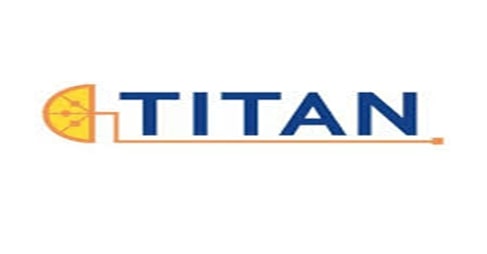 Funding for this research has been provided by the European Union’s Horizon Europe innovation programme ΤΙΤΑΝ (Grant Agreement Number 101060739). Funded by the European Union. Views and opinions expressed are, however, those of the author(s) only and do not necessarily reflect those of the European Union or European Research Executive Agency. Neither the European Union nor the granting authority can be held responsible for them.
Funding for this research has been provided by the European Union’s Horizon Europe innovation programme ΤΙΤΑΝ (Grant Agreement Number 101060739). Funded by the European Union. Views and opinions expressed are, however, those of the author(s) only and do not necessarily reflect those of the European Union or European Research Executive Agency. Neither the European Union nor the granting authority can be held responsible for them.








